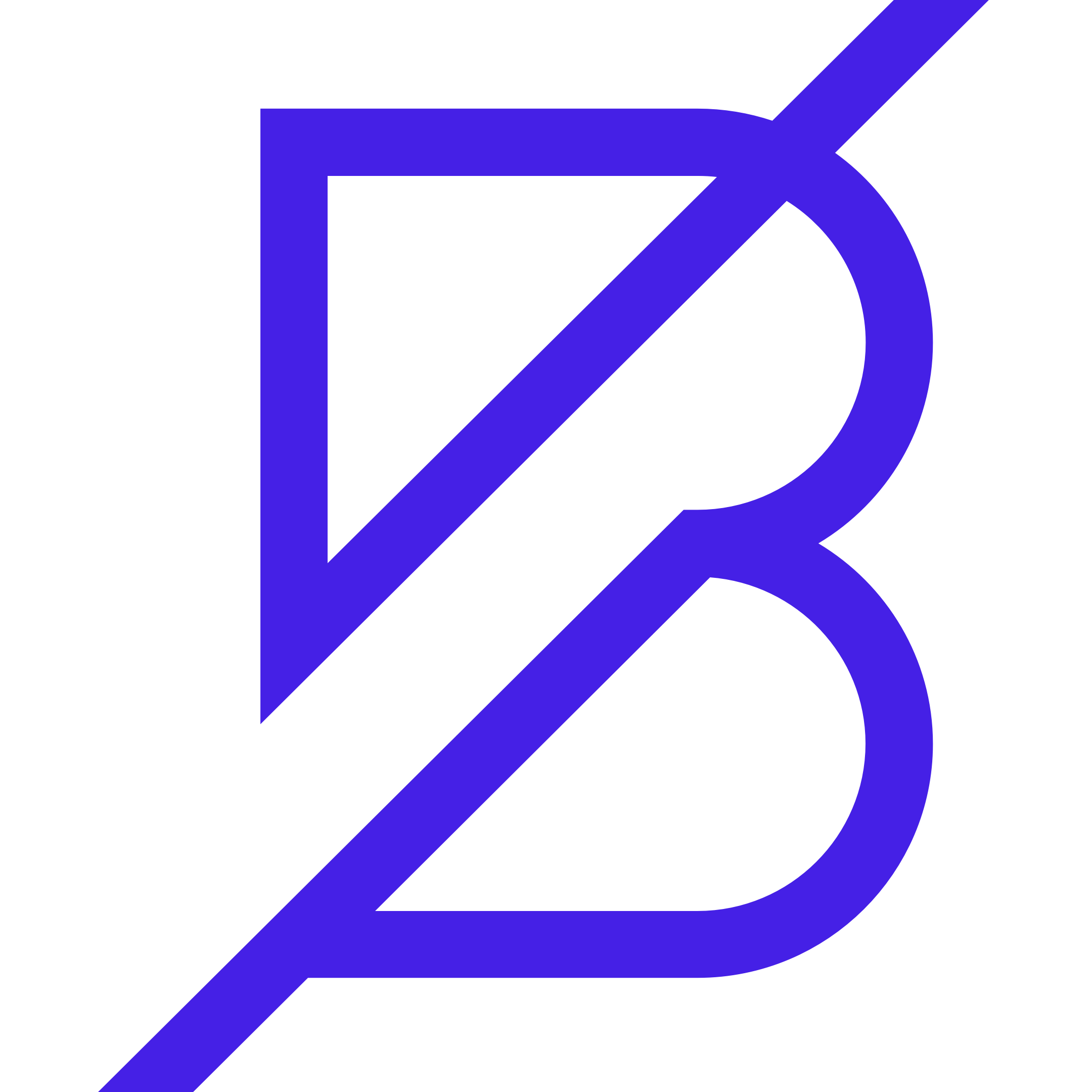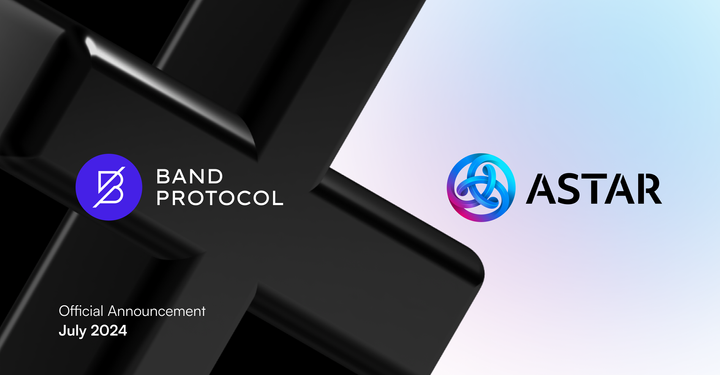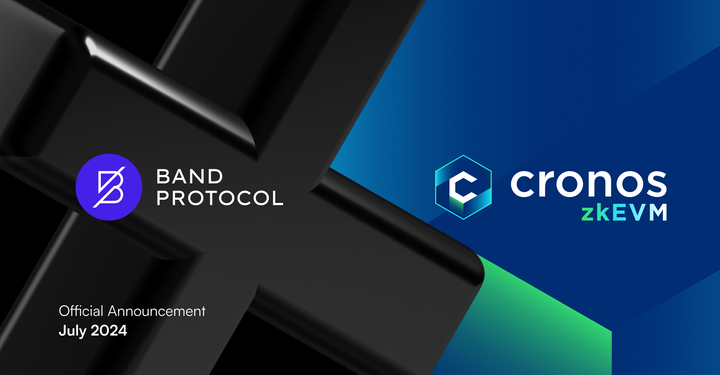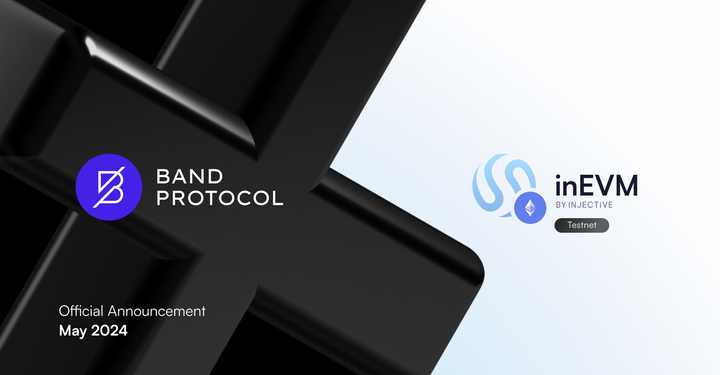Horizen X Band Protocol AMA Recap
In June 2023, Band Protocol conducted an AMA session featuring Horizen, focusing on the integration of Band Protocol's price feeds with Horizen EON. Spencer Soloway, the Vice President of Ecosystem Growth at Horizen Labs, participated in the AMA event.

In June 2023, Band Protocol conducted an AMA session featuring Horizen, focusing on the integration of Band Protocol's price feeds with Horizen EON. Spencer Soloway, the Vice President of Ecosystem Growth at Horizen Labs, participated in the AMA event, which was facilitated by Leon from Band Protocol. Here, we'll provide an overview of the main insights shared during this AMA.
For a more comprehensive understanding of this AMA session, you may refer to the original recorded video:
** Some parts of the following transcript have been edited for clarity while ensuring the original meaning is preserved.**
Q1. Leon: Could you elaborate a bit more on my short explanation about what Horizen is; what it matters and why it is important to name a few top-of-mind key things?
Spencer: Horizen is ultimately a ZK-enabled network of side chains. The Horizen mainnet has been around for the equivalent of decades within the space and was originally a fork of Zcash, which was a fork of Bitcoin. It was originally started as a privacy project; it is no longer a privacy project and/or token. Things like the shielded pools that enabled that are either gone or going away. Now, we are much more focused on user security/safety as well as what we call “selective confidentiality”. Our roots are very much within the project even though the exact aim and way, that’s brought through, have changed quite a bit over time. But, ultimately, the real goal of Horizen is the ability to have multiple side chains. EON is the first EVM-compatible one, but it is likely not going to be the last certainly. The ability for each of those side chains, for example, to have their consensus mechanisms, the ability for those side chains to be able to communicate with each other, validate transactions going back to the mainchain, and take advantage of ZK and zero knowledge to selectively send things back and forth across chains and back to the mainchain. That brings things forward from there.
Q2. Leon: I’ve always believed it will be a multi-chain world. What is your view on this matter?
Spencer: I mean personally 100%, personally speaking, and, on behalf of Horizen, the answer maybe 150% and even more so. The future is multi-chain not just within our ecosystem but within other ecosystems. A lot of what we are doing with EON is making sure that we have those connections through bridges, open conversations, and collaboration. Ultimately, it is going to be a multi-chain world, ultimately, there is space for many chains, and, ultimately, there's a reason for different chains that do different things. I think that in the past you really saw a lot of chains trying to be like you said that “Ethereum killer”. I think what we have realized now is that different chains have different uses, right?
And, you see that both in terms of separated L1s as well as separated L2s. You'll see that within our ecosystem, as we move forward, you are likely to see chains that really are for DeFi, as opposed to the potential of L2s that are really for gaming. Everything has to connect both internally and externally. And, ultimately, I think that we talk about multi-chains generally from a user perspective and the ability to bridge assets across chains, for example. But, I also think it's from a collaboration perspective, and that’s the ability to talk, share, and build together and the idea that really a rising tide is going to lift all boats within the space.
Q3. Leon: Next to Horizen you also have a fully EVM-compatible sidechain and smart contracting platform, named EON which launched a couple of months ago - could you tell a bit more about that? I noted there are also bug bounties worth up to $75,000,-
Spencer: As we already mentioned, EON is a fully EVM-compatible sidechain that, right now, is live on our public testnet, which is named Gobi. It will be going to the mainnet soon, which will have a technical launch where people can get in and start to use it. A public beta launch will be happening this summer as we continue to add partners and ensure that there is liquidity on-chain and that it really is a highly usable active chain.
Bug bounties, as you mentioned, are certainly a large part of that; we work with our partner Immunefi on that, and I encourage everyone to check that out. We need to make sure that we have a secure, safe, and usable chain. To that end, there are Bug Bounty programs. There are also grant programs, the first of which is going on now with our partners at BuildBox, which I encourage folks to look up!
At the end of the day, what we always talk about internally is that there are about 200 or so EVMs out there in the world, but really, at the end of the day, there are about 20-25 ones that are really usable in any way, shape or form on a broader scale. Our first and initial goal is to make sure that we have a vibrant, usable ecosystem on the Horizen side. Then, on the Horizen Labs side, we are doing what we can to be a builder within that ecosystem and to make sure that we’re getting to where we all want to be.
Q4. Leon: As Band Protocol facilitates our decentralized oracle solution to the EON ecosystem specifically, Could you touch on what this means for Horizen and give a keen explanation of the formal integration as we advance?
Spencer: Oracles, as you all know, are really central to any functioning ecosystem. As we were looking for sort of launch partners, within the EON ecosystem, it was really important for us to have sort of expansive, stable, usable, and well-known oracles on board. The one that can obviously provide everything in terms of price feeds, programmable scripts, cross-chain compatibility, kind of getting towards the multi-chain world that we talked about before, and the ability to get information that's usable, sortable, and easily accessible to developers.
Band was an obvious choice. As we looked at all the oracles, Band was one that obviously stuck out because of the trust that we obviously have in it, the trust that we believe a lot of people rightfully have in it, and it's the ease of use, at the end of the day. So, we're super excited to have Band on board.
We're really excited to see what people build with it, both from a new perspective of what comes from other chains, and sort of enters the Horizen ecosystem that takes advantages of Band. That's sort of the long and short of it. It was very important for us to have best-in-class oracles, and Band meets all of the criteria from that perspective.
Q5. Leon: What makes EON different from other smart contracting platforms?
Spencer: It’s a great question! Let’s start with what I tell everyone when they talk about differentiators, which is, at its core, an EVM runtime environment. A lot of its purposes is not differentiated, right? It’s a standard and it’s compatible with things launched on EVMs across the board. Now, where the differentiators really lie are in terms of the network that it’s built on and the different layers that go on top of it.
For us, there are a couple of things. One is the network that it’s built on. The fact that it’s built on the Horizen network and benefits from the ability to have side-chain-to-side-chain communication from Zendoo, which I know we’ll talk about a little bit more as we move on. From that sort of ability to be communicative with other side-chains.
It also benefits from its consensus mechanism, which we can get into for a long time and talk about the reasons behind that decision, but that’s one side of it. Another side of it is the things that are built on top of it, we are very focused on having the best-in-class developer stack as well as making sure that people want to build on it and that we have those options open. We’re not limiting it in a way that some competitors certainly are, where there is a limited set of developer tools. We’re making sure that we have as many SDKs, IDs, APIS on one side, and we’re supporting and integrating all the best-in-class oracles, like Band and so forth, as well as making sure that there are partners who are providing solid liquidity on-chain.
Closing Remarks
These points summarize the key insights from the AMA session between Band Protocol and Horizen held in June last year. For a more in-depth exploration of the topics discussed, we invite you to listen to the full discussion on our YouTube channel via this link.
For those interested in delving into the specifics of the integration between Band Protocol and Horizen, additional information is available at:

Band Protocol & Horizen EON Integration Blog
About Horizen
Horizen is a layer 0 public blockchain powered by the largest node system and a scalable cross-chain protocol, Zendoo. Horizen EON is the first public proof-of-stake, EVM-compatible smart contract sidechain in the Horizen ecosystem. With the addition of Horizen EON, developers will be able to access and deploy dapps and custom sidechains seamlessly by leveraging the secure architecture of the Horizen network.
Start building on Horizen EON today! Visit eon.horizen.io to get started
About Band Protocol
Band Protocol is a cross-chain data oracle platform with the aspiration to build high-quality suites of web3 development products. The flagship oracle solution aggregates and connects real-world data and APIs to smart contracts, enabling smart contract applications such as DeFi, prediction markets, and games to be built on-chain without relying on the single point of failure of a centralized oracle.
More about Band Protocol: https://linktr.ee/bandprotocol




